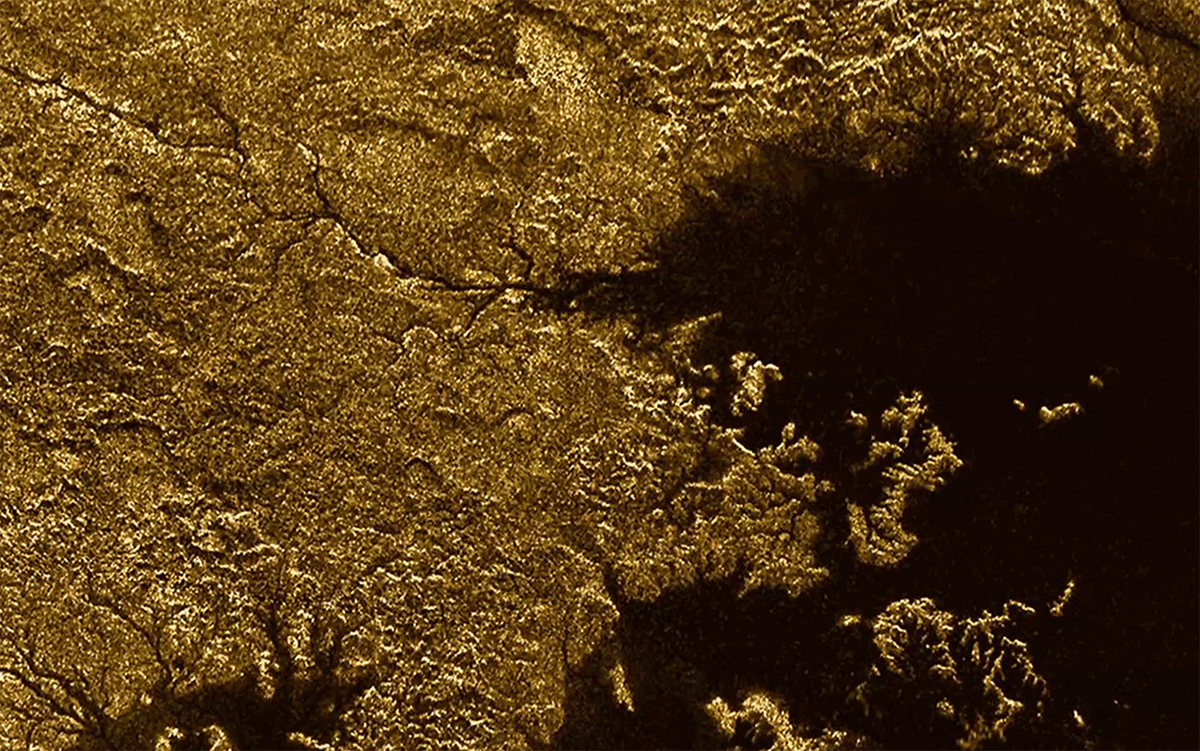Titan is gorges: Moon features steep, liquid-filled canyons
By Blaine Friedlander

Although Saturn’s largest moon, Titan, is surrounded by a thick, hazy atmosphere, Cornell astronomers have revealed that the moon’s terrain features deep, steep-sided canyons filled with liquid hydrocarbons.
While NASA’s Cassini mission previously had imaged the channels flowing into the large northern sea Ligeia Mare, the new observations used the Cassini radar’s altimetry mode to measure their topography. The surprising results showed canyons hundreds of feet deep – featuring specular reflections from the channel floors, the first direct evidence that they are currently filled with liquid.
“Earth is warm and rocky, with rivers of water, while Titan is cold and icy, with rivers of methane. And yet it’s remarkable that we find such similar features on both worlds,” said Alex Hayes, assistant professor of astronomy.
“The canyons found in Titan’s north are even more surprising, as we have no idea how they formed. Their narrow width and depth imply rapid erosion, as sea levels rise and fall in the nearby sea. This brings up a host of questions, such as where did all the eroded material go?” Hayes said.
The Cassini observations disclosed these channels – narrow canyons in a river network called Vid Flumina – about a half-mile wide, with canyons 800 to 1,900 feet deep and steep slopes.
Valerio Poggiali of Sapienza University of Rome – who was a visiting student at Cornell when part of this work was completed and who will soon join Cornell’s astronomy department as a research associate – led the project.
“It’s likely that a combination of … forces contributed to the formation of the deep canyons, but at present it’s not clear,” Poggiali told the Jet Propulsion Laboratory, the group managing Cassini. “What is clear is that any description of Titan’s geological evolution needs to be able to explain how the canyons got there.”
In addition to Hayes, Cornell astronomers on the study, “Liquid-filled Canyons on Titan,” appearing in the journal Geophysical Research Letters, August 2016, included researcher Marco Mastrogiuseppe; Sam Birch, a doctoral student in the field of astronomy; and Jason Hofgartner, Ph.D. ’16, now at the Jet Propulsion Laboratory.
Media Contact
Get Cornell news delivered right to your inbox.
Subscribe